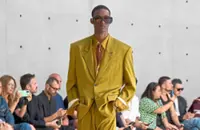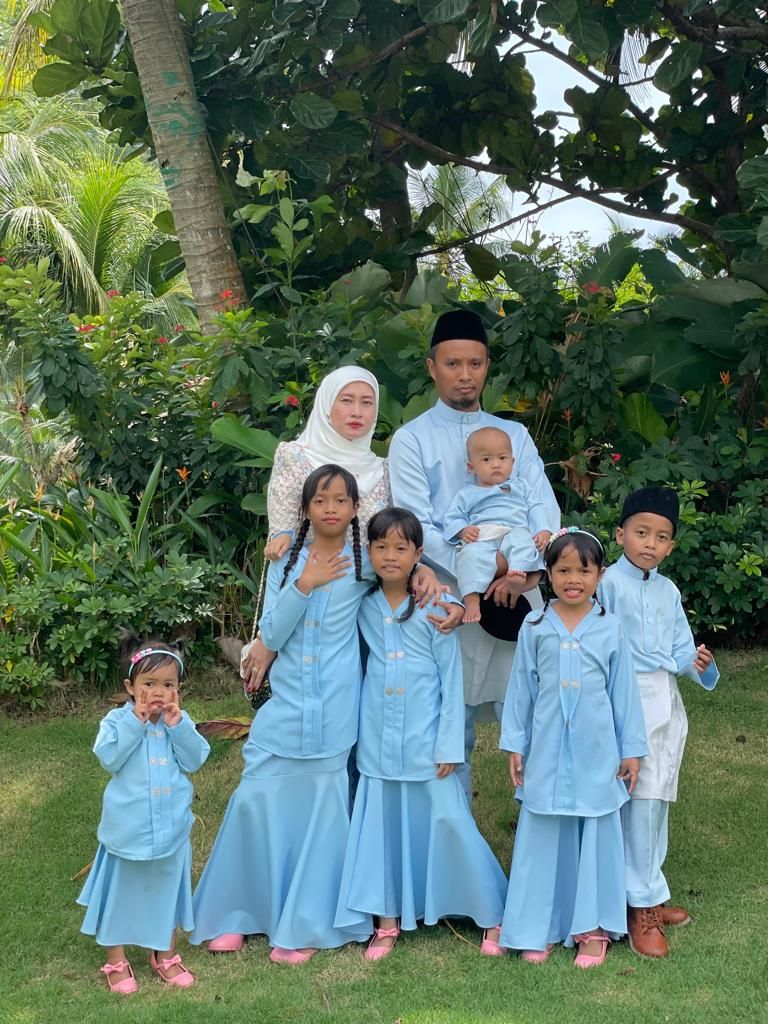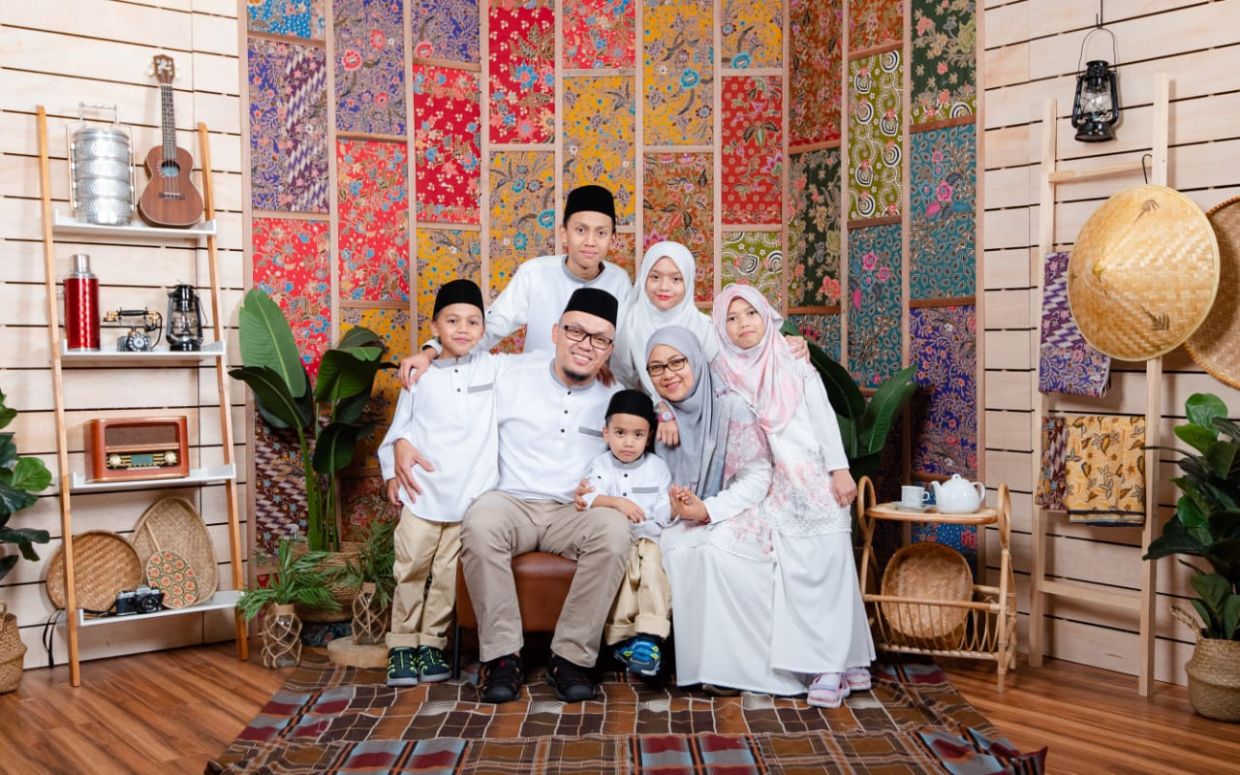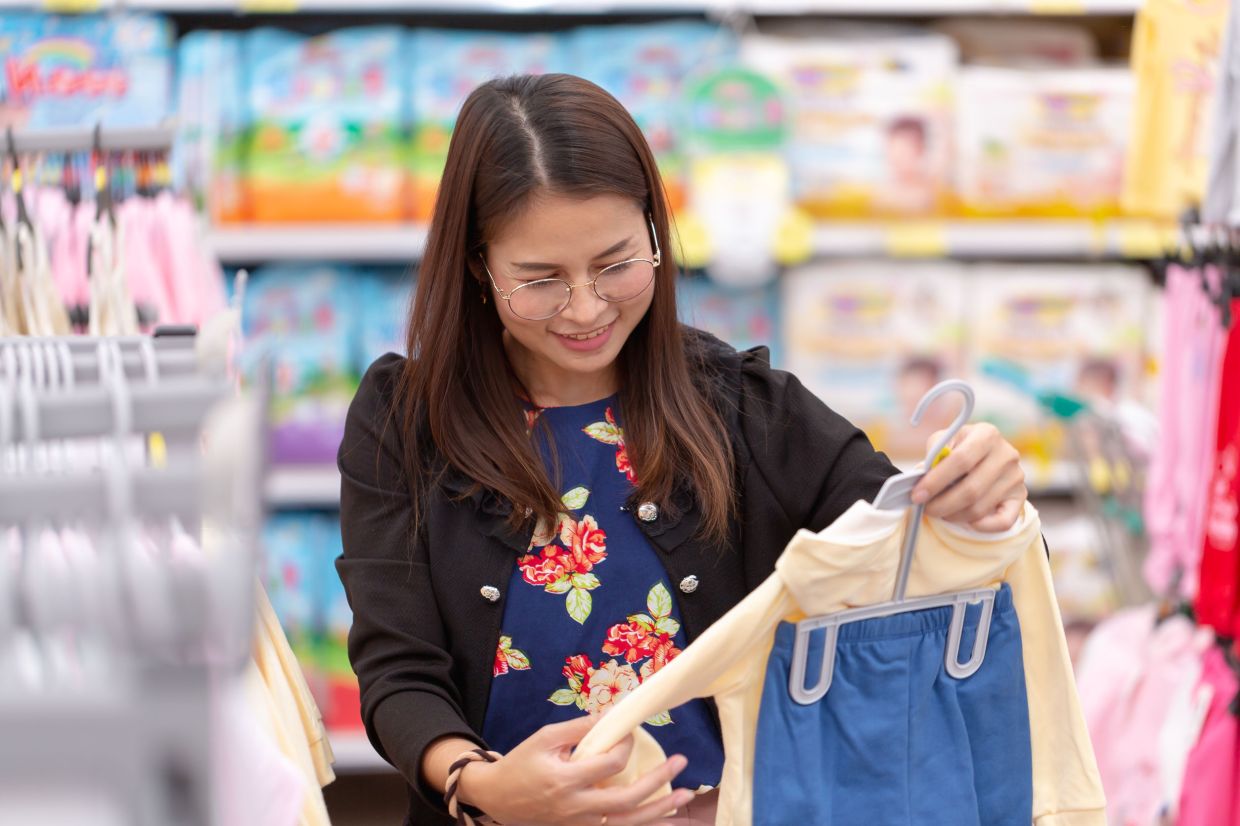Practised in many cultures, babywearing has attained commercial success among modern parents. — Photos: 123rf.com
IN THE thick of excitement and happiness of expecting a baby, there is a set of daunting shopping choices awaiting new parents – what are necessary and what can be skipped?
From cribs that promise the sweetest dreams (and that means better sleep for parents) to baby gadgets like white noise machines that are said to be parenting game-changers, the world of baby products is massive and this can be confusing to new parents.
Manufacturers and marketers, of course, are more than ready to bank in on new parents’ excitement. Go to any baby fairs held periodically in the country and you can see a massive crowd made up of young parents, trying to get the best bargains on baby products.
The industry is consistently expanding. Last June, data and business intelligence platform Statista published a report that said the global baby care products market is projected to be worth approximately US$88.72bil (RM410.86bil) in 2026, a substantial increase from US$67.35bil (RM295.23bil) in 2020.
The baby care market is composed of different sectors and products, such as toys, feeding accessories, wipes, disposable diapers, body care products and soothers.
The same sentiment is echoed by Precedence Research, a Canada- and India-based company that provides market insights. The company says this segment is expected to hit around US$158.29bil (RM733.04bil) by 2032 and registers a compound annual growth rate (CAGR) of 5.4% from 2023 to 2032.
For new parents, however, not all treasures are worth the splurge and not all bargains are true steals. There is a fine line between practical essentials and (possibly) foolish splurges, and this can make shopping for a newborn an overwhelming experience.
Father-of-six Mohd Izwan Hamzah, 40, says because of the novelty of welcoming their first born, would-be parents often over-plan, which was what he did 12 years ago.
“For our first child, the preparation was done way too early. We were too eager to get everything ready and organised for the new member of family.”
“But over time, my wife and I became more adaptable and responsive to the unique requirement of each pregnancy and we learned from the experiences of previous preparations,” says the civil engineer.
For 39-year-old housewife Nur Fatimah Saiful Ahmad, who is mother to four children, the excitement of welcoming her first born was even greater.
“After two years of waiting, we were just so happy to welcome our child. We wanted to buy almost everything, and at that point, everything was essential to us,” Fatimah, whose children are between five to 14 years old, says.
Meanwhile, engineer Siti Hawa Hambali says her list of baby and postnatal care items are usually very long, so she would divide the purchases into four to five months.
“Usually my earliest purchase would start in my fourth month of pregnancy,” says the mother of five children, aged three to 10 years old.
Put money where it’s worth
If there is one thing that these parents, who hail from different parts of Selangor agree on, is that it’s a good idea to invest in good babywearing gear.
Practised in many traditional cultures, babywearing has gained commercial success for two reasons: the proximity between the infant and the adult makes the infant feels safer and gives the parent a hands-free advantage to do other things while carrying his or her baby.
Siti Hawa even has two versions, the stretchy wrap and the soft, structured carrier. “I used the wrap for my newborns until they were four months old, and moved to the carrier until they were around 15 months old,” says Siti Hawa.
She finds it convenient, especially during doctor appointments because her babies sleep really well when they are in the wrap.
“It was a real lifesaver,” says Nur Fatimah, “since it made my life easier when I had to handle three young children at places that were not stroller-friendly.”
Mohd Izwan recommends a carrier that offers multiple carrying positions, padded shoulder straps, a supportive waistband and is machine-washable. “I used the baby carrier more frequently than the baby stroller,” he says.
In her list of baby essentials to splurge on, Siti Hawa also includes two items that prioritise the well-being and comfort of mothers – nursing chair and pillow.
“Through my first three deliveries, I learnt that the postnatal period is very tiring, with sleepless nights and feeding sessions, so for my fourth postnatal period, I bought a nursing chair as a solution,” she says.
Thanks to the chair’s gliding motion, she was able to rock her baby to sleep while maintaining a relaxed position.
“When the baby was asleep, I could carefully recline the chair and sleep comfortably. My husband also enjoyed rocking the baby to sleep in this chair. I have been using this chair for more than four years now,” she adds.
Elaine Chew, who founded baby store Happikiddo 12 years ago, says generally, parents would splurge on quality, innovation and user-friendliness.
“They also want something that would grow with their children to make the splurge worthwhile,” she says.
Chew adds that urban parents, who have fewer children, are also more willing to spend more on their babies. “Nowadays, with so few babies, the parents, and even grandparents, would want to give their best to the baby,” she adds.
Chew, who has a pair of twins aged 14, says her best purchase when they were babies were high chairs from a Scandinavian brand. “Until today, they still sit on the chairs for their meals. The chair is so solid and it could be passed down to the next generation,” she says.
Don’t bother with these
These parents unanimously name two items not worth buying – baby food processor and baby cot.
“I was so excited to introduce my baby to food that I jumped at the sight of a steam-and-blend baby food maker. It made food preparation looks so easy,” says Nur Fatimah. But it didn’t take her too long to realise that any regular blender or food processor could get the same job done without taking much time on cleaning and space for storage.
Like most first-time parents, Siti Hawa bought a baby cot but it was not used until the arrival of her fourth child. “You thought the item would be useful, but when faced with the realities of having an infant, you realised that it was not as practical as it looked on the brochures,” she adds.
A self-confessed practical shopper, Mohd Izwan says parents don’t need to buy baby shoes and baby-specific laundry detergent. “First of all, babies cannot walk, so they don’t need shoes. You can always use normal detergent and wash thoroughly to make sure there is no residue on the clothes that might irritate baby’s sensitive skin,” he says.
For Chew, a stroller for newborns does not really deliver value for money. “I think it is not very useful for Asians because traditionally, we don’t bring out the baby until he or she is three months old and the baby will outgrow the stroller so quickly that it becomes a nuisance instead,” she says.
When at home
While parents’ purchases for infants centre around major issues like mobility, sleep and breastfeeding, carers, who look after babies while their parents go to work or are out running errands, require a different set of items. Since they are expected to stay home with the infant, naturally, they need things to keep keep babies comfortable.
For carer Nur Shakira Sarifudin, 30, what’s important in her work is a steady supply of essentials – diapers, baby wipes, bibs, blanket and favourite toys.
“These items are important for a baby’s comfort, to create a more relaxed atmosphere so he or she is calm while the parents are away,” she says.
Nur Shakira also brings her own set of baby-safe toys to work because they help with the young one’s sensory development.
“Engaging babies in suitable activities is not just a task; it represents a fundamental aspect of my role as a carer that extends beyond just playing and caring,” she says.
Soft rattle toys, mirror toys, play gym, floating toys for water play, fabric books and soft blocks are little things that can help babies explore the world.
“A portable playpen or a safe area to play ensures child safety while providing a secure space for supervised play during caregiving. It also allows the carer to attend to other essential tasks with the peace of mind that the child is in a safe spot.
Nurin Izzah Qistina, 23, who has been a carer with babysitting platform Kiddocare for four years says she too, brings activities or toys that are suitable for the child she is assigned to look after.
“Playing is how babies and toddlers learn so it’s important to incorporate good quality playtime tools to help them with age-appropriate development. This will also help capture their attention and keep them engaged,” she says.
Nurin says she likes to use sensory bag, finger and hand puppets and puzzles to play with babies.
“The toys need not be expensive, they just have to be good for babies to play and learn with. Parents can also make their own activity materials with used or existing items. It saves money, and is convenient for those with less resources,” she adds.
On different page
Some other items, however, are subjective. What works for some parents might not work on others. And these parents are on different pages when it comes to soothing devices for babies.
“A full set cradle stand with an electric motor has been invaluable for my baby’s sleep routine. The gentle rocking motion helps my baby sleep longer which allows me to be more productive during those precious nap time,” says Mohd Izwan.
However, Nur Fatimah trained all her children to sleep without the use of a swing or cradle. “It’s more practical, especially since our family travels a lot,” she adds.
While Siti Hawa does not recommend a baby rocker for safety reasons, she vouches for a baby bouncer.
“I rock my baby to sleep in the bouncer. It bounces really softly and has a very simple folding system so it can easily be transported around and fit any car boot,” she adds.
These two mothers also have different ideas on a newborn baby’s clothes. Nur Fatimah advises new parents not to buy too many. “But if you must buy, get those sized three months and above. Besides, you will get a lot of baby clothes as presents,” she adds.
Siti Hawa agrees: “Babies outgrow their clothing very quickly. Newborns usually only wear the same clothes for around three months.” She also suggests that new parents buy unisex apparel since they can be handed down to their younger siblings in future.
These parents agree that investing some time on research by reading reviews and seeking recommendations from trusted sources are the best ways to prepare for shopping for a baby.
“You need products that meet safety and quality standards, and you also need to focus on buying essential items that are functional and durable rather than being swayed solely by brand names,” says Mohd Izwan.
Ever since she decided to be a stay-at-home mother when she gave birth to her third child 10 years ago, Nur Fatimah has become more careful and practical.
“Those days, once I was satisfied with my research, I would not hesitate to buy an item. But now, my husband and I shop with an allocated budget,” she says.
Siti Hawa applies the same practice too. “To weigh the value of a product, I usually seek recommendations from friends, read reviews from different online resources and make comparisons between specifications and prices,” she says.












